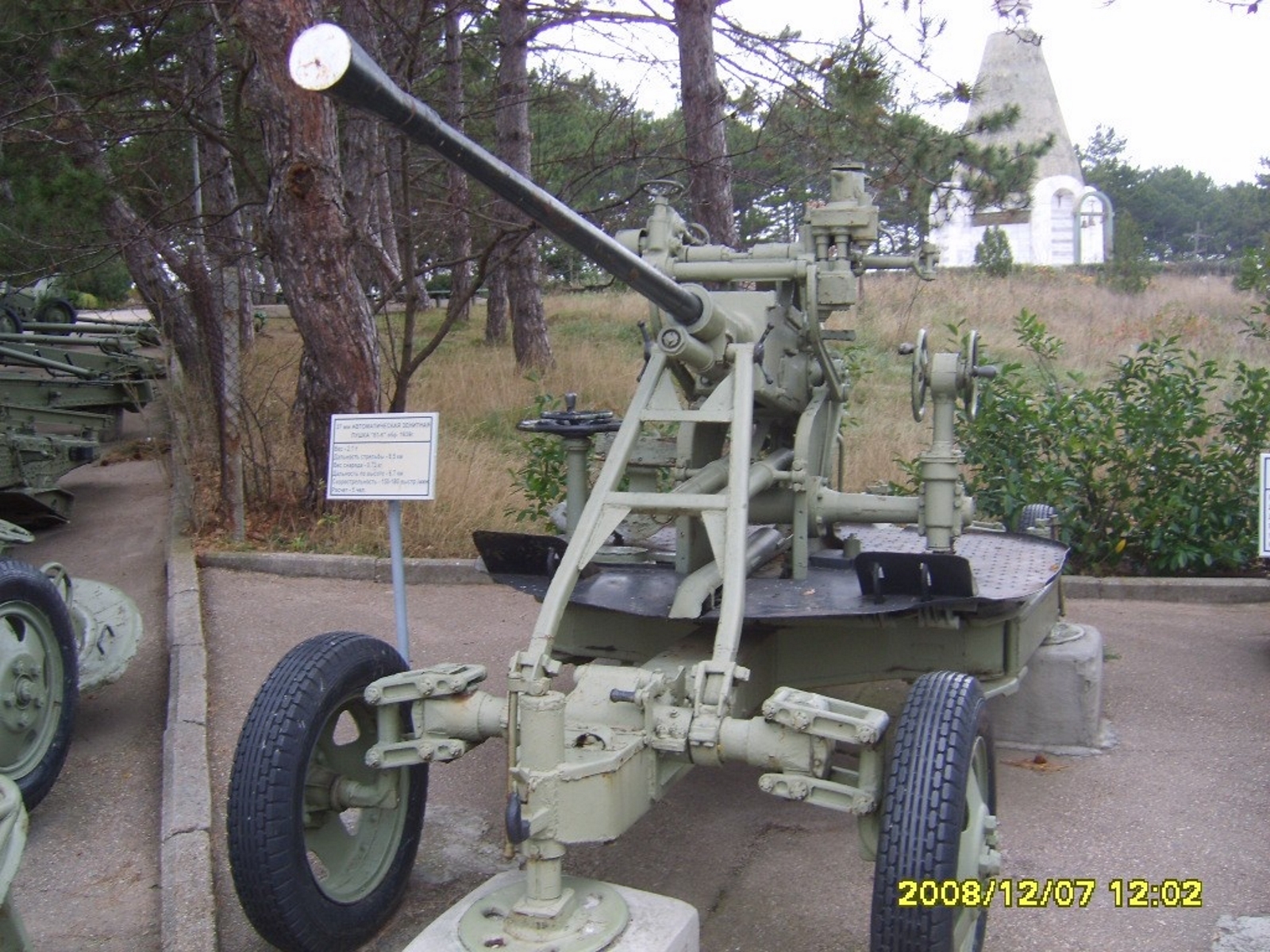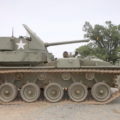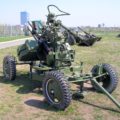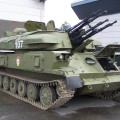
37mm ilmatorjunta-ase | |
|---|---|
| Maa | Neuvostoliiton |
| Tyyppi | Ilmapuolustusase |
| Kausi | 1939-1945 |
| Rakennettu | 20.000 |
37 mm automaattinen ilmatorjunta-ase M1939 (61-K) (venäjäksi: 37-ммм автоматическая зенитная пушка образца 1939 года (61-К)) oli neuvostoliittolainen 37 mm kaliiperinen ilmatorjunta-ase, joka kehitettiin 1930-luvun lopulla ja jota käytettiin toisen maailmansodan aikana. Maapohjainen versio korvattiin Neuvostoliiton palveluksessa ZSU-57-2:lla 1950-luvulla. Tämäntyyppisiä aseita käytettiin menestyksekkäästi koko itärintamalla sukelluspommittajia ja muita matalan ja keskikorkeuden kohteita vastaan. Siitä oli myös jonkin verran hyötyä kevyesti panssaroituja maakohteita vastaan. 37 MM AD-tykin miehistö ampui alas 14 657 akselikonetta. 37 mm:n ammusten määrä yhden viholliskoneen alas ampumiseen oli 905 patruunaa.
Lähde: 37mm M1939 Wikissä
| 37 mm ilmatorjuntatykki Kävele ympäri | |
|---|---|
| Valokuvaaja | Verwolf-niminen |
| Lokalisointi | Ei tietää |
| Valokuvat | 16 |
Aiheeseen liittyvät sarjat:
Etsi sarjoja eBaysta:
Katso myös:
The 37mm anti-aircraft gun was a type of weapon used by various countries during World War II. It was designed to shoot down enemy aircraft at low to medium altitudes, using high-explosive or armor-piercing shells. The 37mm caliber was chosen because it offered a good balance between weight, muzzle velocity, rate of fire, and accuracy. Different models of 37mm anti-aircraft guns were produced by Germany, the United States, Romania, and the Soviet Union, each with their own characteristics and performance. Some of the most notable examples are:
– The 3.7 cm Flak 18/36/37, developed by Rheinmetall in Germany, was a fully automatic gas-operated cannon that could fire up to 160 rounds per minute. It had a three-legged platform mount that allowed 360 degrees of traverse and a maximum elevation of 85 degrees. It was used by the German army and air force, as well as by Romania and Bulgaria.
– The 37 mm gun M1, developed by John M. Browning and Colt in the United States, was an anti-aircraft autocannon that could fire up to 120 rounds per minute. It had a four-wheeled trailer mount that allowed 360 degrees of traverse and a maximum elevation of 90 degrees. It was used by the US army and navy, as well as mounted on half-tracks and PT boats.
– The 37 mm automatic air defense gun M1939 (61-K), developed by the Soviet Union, was an anti-aircraft autocannon that could fire up to 80 rounds per minute. It had a two-wheeled carriage mount that allowed 360 degrees of traverse and a maximum elevation of 85 degrees. It was used by the Soviet army and navy, as well as by China and North Korea.
– The 37 mm gun M3, developed by the United States, was the first dedicated anti-tank gun fielded by US forces in numbers. It could fire up to 25 rounds per minute, using armor-piercing shells that could penetrate up to 25 mm of sloped armor at 500 yards. It had a split-trail carriage mount that allowed 60 degrees of traverse and a maximum elevation of 15 degrees. It was used by the US army and marines, as well as by Britain and France.
The 37mm anti-aircraft gun played an important role in World War II, providing air defense and ground support for various armies and navies. It was effective against low-flying aircraft, light tanks, armored vehicles, and infantry targets. However, it also faced limitations such as limited range, low accuracy at high altitudes, vulnerability to counter-battery fire, and obsolescence due to the development of more powerful guns and faster aircraft.
Katsottu: 4353






Uusi